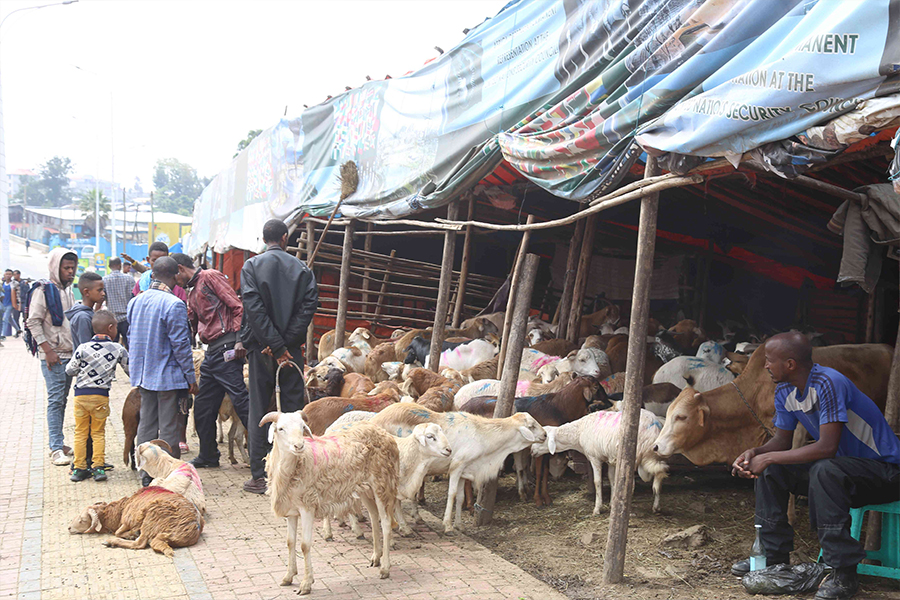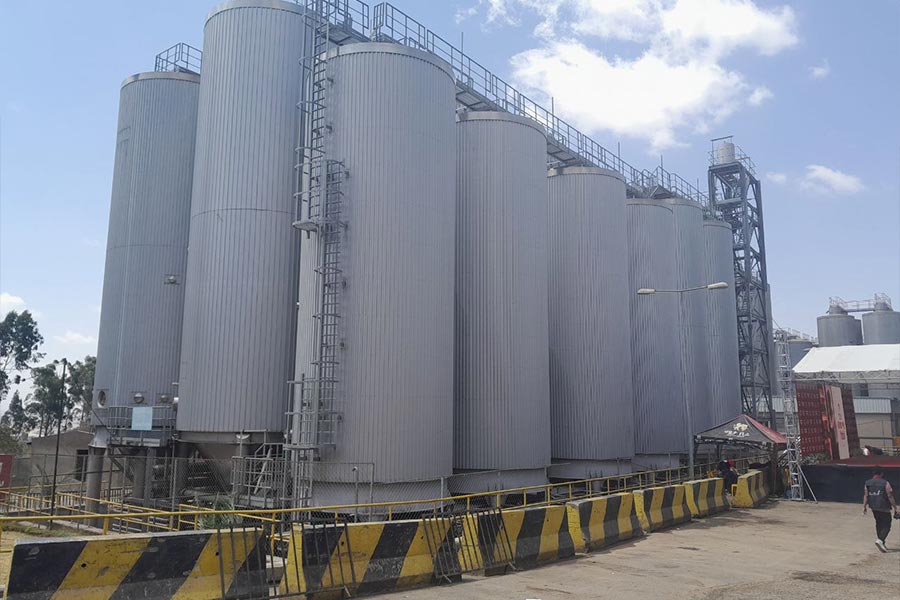
Radar | Jul 30,2022
Aug 25 , 2024
By Tsedeke Y. Woldu
The IMF program for Ethiopia requires systemic reforms and rigorous oversight, with a specific focus on the financial administration of state-owned enterprises. Yet, this engagement also presents opportunities for an upgrade in the country’s sovereign credit ratings and access to foreign grants, loans, and partnerships, which could be on the horizon. However, the success depends on the balance, resting heavily on effectively managing the identified risks, writes Tsedeke Yihunie (tsedeke.woldu@gmail.com), a shareholder and former CEO of Flintstone Homes.
The federal government's recent engagement with the International Monetary Fund (IMF) under the Extended Credit Facility (ECF) represents a potentially transformative shift in Ethiopia's economic strategy. Essential for a country gripped by economic ordeals on multiple fronts, it could stabilise and integrate Ethiopia more deeply into the global economy. However, it also presents considerable risks, particularly given Ethiopia's precarious external debt situation. It demands vigilant management to avoid exacerbating existing vulnerabilities.
In July of this year, Ethiopia formally requested an arrangement under the ECF, submitting a letter of intent to the IMF. Two crucial documents accompanied this request: the Memorandum of Economic & Financial Policy (MEFP) and the Technical Memorandum of Understanding. These submissions paved the way for the IMF's Executive Board to approve the request, setting a four-year program that could determine the country’s economic future in motion.
Estimated to be engaged in transactions totalling 53 billion dollars over the next four years with the rest of the world, Ethiopia faces a daunting financial gap of over 20 billion dollars. Pre-ECF negotiations had already led to the arrangement of 9.7 billion dollars from official transfers, privatisation, and debt restructuring. This leaves a residual gap of 10.6 billion dollars that its leaders expect to bridge with support from the IMF and development partners. Specifically, the burden is slated to be shared among IMF disbursements of 3.4 billion dollars, further debt restructuring of 3.5 billion dollars, and direct budget support amounting to 3.75 billion dollars.
Ethiopia's concessions to secure the ECF were consequential, reflecting a bold commitment to economic reforms and a leap of faith towards greater integration into the global economy. If successful, the anticipated benefits of this program could be unprecedented, opening doors to foreign grants, loans, and partnerships and potentially leading to an upgrade in the country’s sovereign credit ratings.
However, it is crucial to recognise that while the ECF offers substantial opportunities, it is not a panacea for Ethiopia's economic problems. Its success depends on the leaders' ability to navigate the risks identified by the IMF, which include government insolvency, financial instability, runaway inflation, and social unrest.
Foremost among these concerns is the deteriorating debt-carrying capacity (DCC). The IMF has stressed this as the country's primary risk, emphasising that any government unable to service its domestic or external debt would struggle to maintain financial stability. A government in such a position could find itself forced to borrow even more in a desperate attempt to stave off an inflationary spiral, which, if unsuccessful, could lead to social unrest. The IMF's focus on DCC uncovers the seriousness of this risk.
There is also a legitimate concern among observers that the resources provided under the ECF could be squandered due to mismanagement, a fear without precedent. Past cases of misallocated funds have left scars on the economy, and the possibility of history repeating itself is a source of anxiety for many. However, recent reforms have introduced safeguards preventing such mismanagement. Notably, the National Bank of Ethiopia (NBE) is now required to make foreign currency available to commercial banks through forex auctions, a mechanism designed to ensure transparency and accountability.
The financial administration of state-owned enterprises, which have often been blamed for being the primary conduits for misappropriating external funds, is slated for a comprehensive overhaul. The IMF will closely monitor these entities as part of its oversight mandate. For example, indicative targets have been set to reduce gross claims by commercial banks on state-owned enterprises from 760 billion Br to 147 billion Br by June 2025. The joint technical memos reveal that budget support through loans and grants would be accounted for at exchange market prices, while specific targets will bind budget deficits and net foreign reserves.
Failure to meet these benchmarks could delay the release of scheduled disbursements, particularly addressing the risk of mismanagement.
Among the financial institutions, none pose a greater risk to the economy than the Commercial Bank of Ethiopia (CBE). It is a central pillar of the country's financial system, and the public relies heavily on its stability. Although details remain sparse, likely due to the sensitivity of the information, the World Bank's support, reportedly involving an injection of 900 billion Br, is expected to be as much about providing technical assistance as it is about financial relief. Such substantial support may alleviate immediate concerns about the CBE's solvency but also raise questions about other potential financial risks.
Liberalising the foreign exchange market has introduced new systemic risks, particularly for the banking industry. Currency trading exposes banks to technical and moral hazards, with technical risks arising primarily from the lack of options to hedge against unfavourable currency movements. Banks typically hedge their forex positions in more developed markets by investing in currency pairs. However, the limited availability of currency options in Ethiopia in sufficient volumes constrains their ability to engage in such practices. Capital account restrictions also prevent them from containing these risks by investing in foreign assets like stocks and bonds.
Banks may be tempted to lend to or invest in related parties without effective hedging mechanisms, a practice that carries its own risks. While related party rules enforced by the Central Bank provide some protection against this, they do not offer a solution for hedging forex exposure. Ironically, this situation might lead banks to increase their investments in foreign currency, constrained only by the NBE's limits on their net open position. Should the ECF work as intended, the Birr could strengthen, leading banks to realise lower returns in Birr for the dollars they initially buy, thereby exposing them to exchange rate risk.
On the social front, the IMF’s Risk Assessment Matrix (RAM) identifies a high probability that external price volatility could exert inflationary pressure on local prices, reduce the volume of critical imports, and push for increased social spending within a tight monetary policy framework. Runaway inflation is the bane of any central bank; it is notoriously difficult to predict or control it. Where the forex market is liberalised, inflationary pressures could emerge through three primary mechanisms: monetary expansion, commodity price shocks, and exchange rate pass-through.
IMF's facility includes provisions to respond to these risks posed by monetary expansion and commodity price shocks, mainly through controls on deficit financing and subsidies. However, the exchange rate pass-through mechanism, whereby adjustments to the exchange rate lead to changes in domestic price indices, is intrinsic to the facility's strategy, especially with the floating of the Birr. The process involves the alignment of exchange rates by market forces, followed by corresponding adjustments in consumer and producer price indices.
In a market economy, prices are primarily influenced by competitive forces among buyers, producers, suppliers, and potential entrants. At a broader level, these forces interact through institutional arrangements involving consumers, entrepreneurs, and the state. As part of the IMF's program, the recent introduction of interest-based monetary policy and open market operations equips the Central Bank and the Treasury with tools to stabilise the forex market using funds from the IMF and other development partners.
Successful stabilisation of import prices through such coordination is often referred to as "sterilisation." The IMF and the Ethiopian authorities have emphasised the need for capacity building in various areas, including price statistics, foreign exchange regulations, monetary operations, and public financial management.
It is worth noting that the Birr has not been a reliable measure of value in recent years. Correcting its value through inflationary adjustments could send crucial signals to importers to reduce imports, exporters to increase shipments, and consumers to brace for austerity. However, these economic arguments may carry little weight in the face of political pressures. Globally, leaders from various political spectrums often attribute sudden price surges to entrepreneurial greed, a sentiment that could resonate in Ethiopia if inflation spirals out of control. The IMF's risk analysis acknowledges this possibility, warning that inconsistent implementation or reversal of key fiscal or exchange rate reforms could widen financing gaps and lead to the withdrawal of support from development partners and creditors.
Despite these risks, the potential rewards of the IMF program are substantial. It projects that Ethiopia’s revenue will increase by four percent of GDP, inflation will be tamed to 10pc, and gross foreign reserves, currently at a mere one billion dollars, are forecasted to grow to 10.2 billion dollars by June 2028. Given these prospects, Ethiopia can hardly afford not to take these risks in pursuit of such rewards. The success of the IMF program could mark a turning point for Ethiopia, unlocking new opportunities for growth and stability in an increasingly interconnected global economy.
PUBLISHED ON
Aug 25,2024 [ VOL
25 , NO
1269]


Radar | Jul 30,2022

Radar | Mar 26,2022

Agenda | Sep 10,2022

News Analysis | Mar 09,2024

Radar | Aug 21,2023

Agenda | Dec 30,2023

Fortune News | Sep 01,2024

Radar | Sep 01,2024

Commentaries | May 11,2019

Fortune News | Dec 02,2023

My Opinion | 132194 Views | Aug 14,2021

My Opinion | 128608 Views | Aug 21,2021

My Opinion | 126528 Views | Sep 10,2021

My Opinion | 124132 Views | Aug 07,2021





Dec 22 , 2024 . By TIZITA SHEWAFERAW
Charged with transforming colossal state-owned enterprises into modern and competitiv...

Aug 18 , 2024 . By AKSAH ITALO
Although predictable Yonas Zerihun's job in the ride-hailing service is not immune to...

Jul 28 , 2024 . By TIZITA SHEWAFERAW
Unhabitual, perhaps too many, Samuel Gebreyohannes, 38, used to occasionally enjoy a couple of beers at breakfast. However, he recently swit...

Jul 13 , 2024 . By AKSAH ITALO
Investors who rely on tractors, trucks, and field vehicles for commuting, transporting commodities, and f...

Jul 12 , 2025
Political leaders and their policy advisors often promise great leaps forward, yet th...

Jul 5 , 2025
Six years ago, Ethiopia was the darling of international liberal commentators. A year...

Jun 28 , 2025
Meseret Damtie, the assertive auditor general, has never been shy about naming names...

Jun 21 , 2025
A well-worn adage says, “Budget is not destiny, but it is direction.” Examining t...

Jul 13 , 2025 . By YITBAREK GETACHEW
The Addis Abeba City Revenue Bureau has introduced a new directive set to reshape how...

Jul 13 , 2025 . By BEZAWIT HULUAGER
Addis Abeba has approved a record 350 billion Br budget for the 2025/26 fiscal year,...

Jul 13 , 2025 . By RUTH BERHANU
The Addis Abeba Revenue Bureau has scrapped a value-added tax (VAT) on unprocessed ve...

Jul 13 , 2025 . By NAHOM AYELE
Federal lawmakers have finally brought closure to a protracted and contentious tax de...